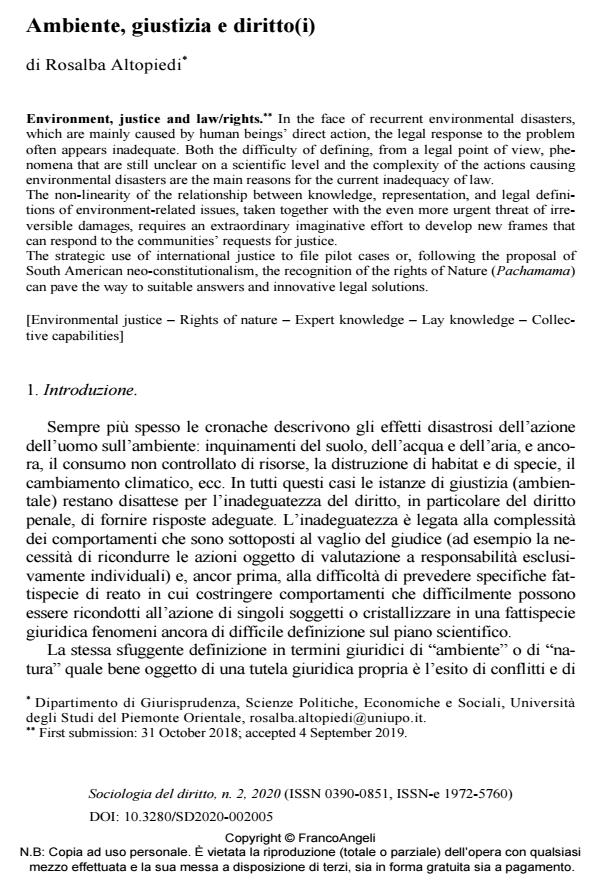Environment, justice and law/rights
Journal title SOCIOLOGIA DEL DIRITTO
Author/s Rosalba Altopiedi
Publishing Year 2020 Issue 2020/2
Language Italian Pages 28 P. 95-122 File size 302 KB
DOI 10.3280/SD2020-002005
DOI is like a bar code for intellectual property: to have more infomation
click here
Below, you can see the article first page
If you want to buy this article in PDF format, you can do it, following the instructions to buy download credits

FrancoAngeli is member of Publishers International Linking Association, Inc (PILA), a not-for-profit association which run the CrossRef service enabling links to and from online scholarly content.
In the face of recurrent environmental disasters, which are mainly caused by human beings’ direct action, the legal response to the problem often appears inadequate. Both the difficulty of defining, from a legal point of view, phenomena that are still unclear on a scientific level and the complexity of the actions causing environmental disasters are the main reasons for the cur-rent inadequacy of law. The non-linearity of the relationship between knowledge, representation, and legal definitions of environment-related issues, taken together with the even more urgent threat of irreversible damages, requires an extraordinary imaginative effort to develop new frames that can respond to the communities’ requests for justice. The strategic use of international justice to file pilot cases or, following the proposal of South American neo-constitutionalism, the recognition of the rights of Nature (Pachamama) can pave the way to suitable answers and innovative legal solutions.
Keywords: Environmental justice - Rights of nature - Expert knowledge - Lay knowledge - Collective capabilities]
- The Palgrave Handbook of Environmental Restorative Justice Anna Di Ronco, Xenia Chiaramonte, pp.421 (ISBN:978-3-031-04222-5)
- La Costituzione del lavoro e dell'ambiente. Per un nuovo contratto sociale Andrea Morrone, in GIORNALE DI DIRITTO DEL LAVORO E DI RELAZIONI INDUSTRIALI 176/2023 pp.513
DOI: 10.3280/GDL2022-176001
Rosalba Altopiedi, Ambiente, giustizia e diritto(i) in "SOCIOLOGIA DEL DIRITTO " 2/2020, pp 95-122, DOI: 10.3280/SD2020-002005